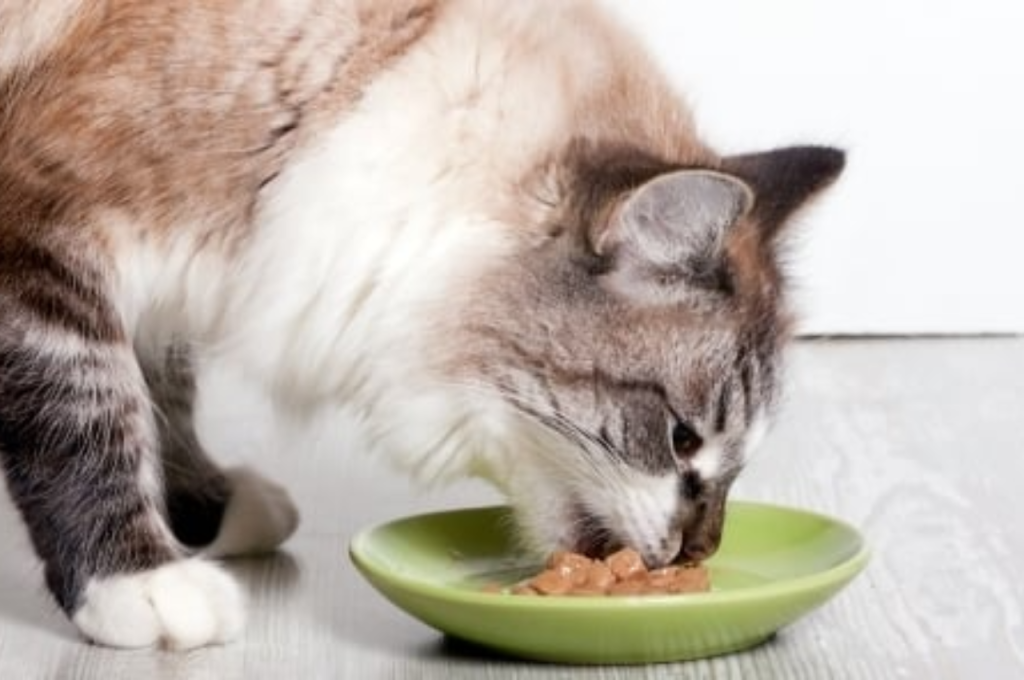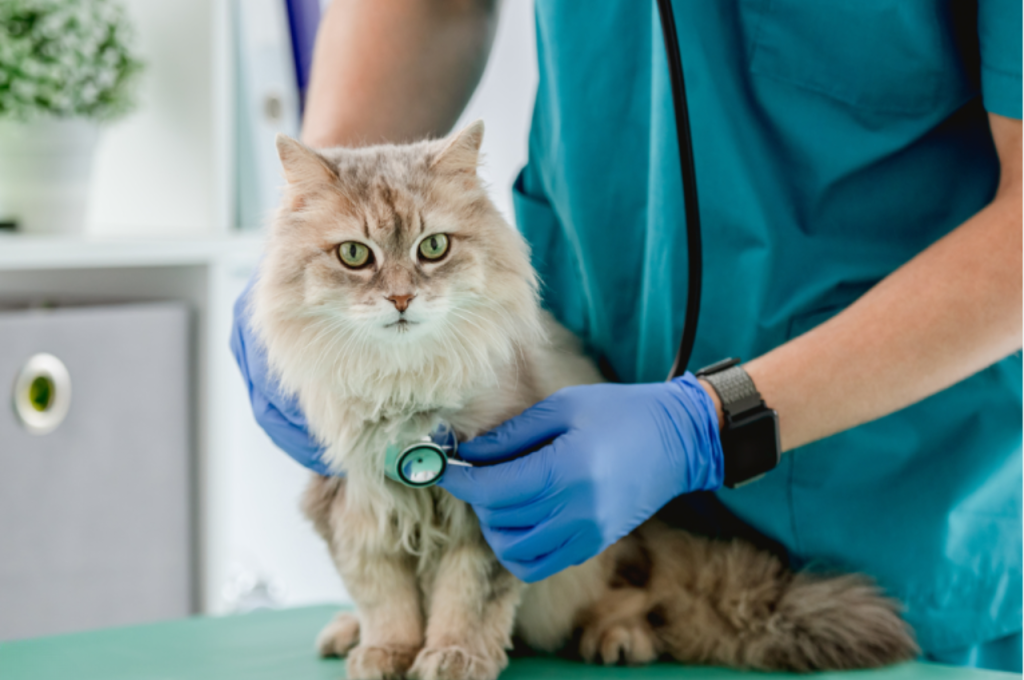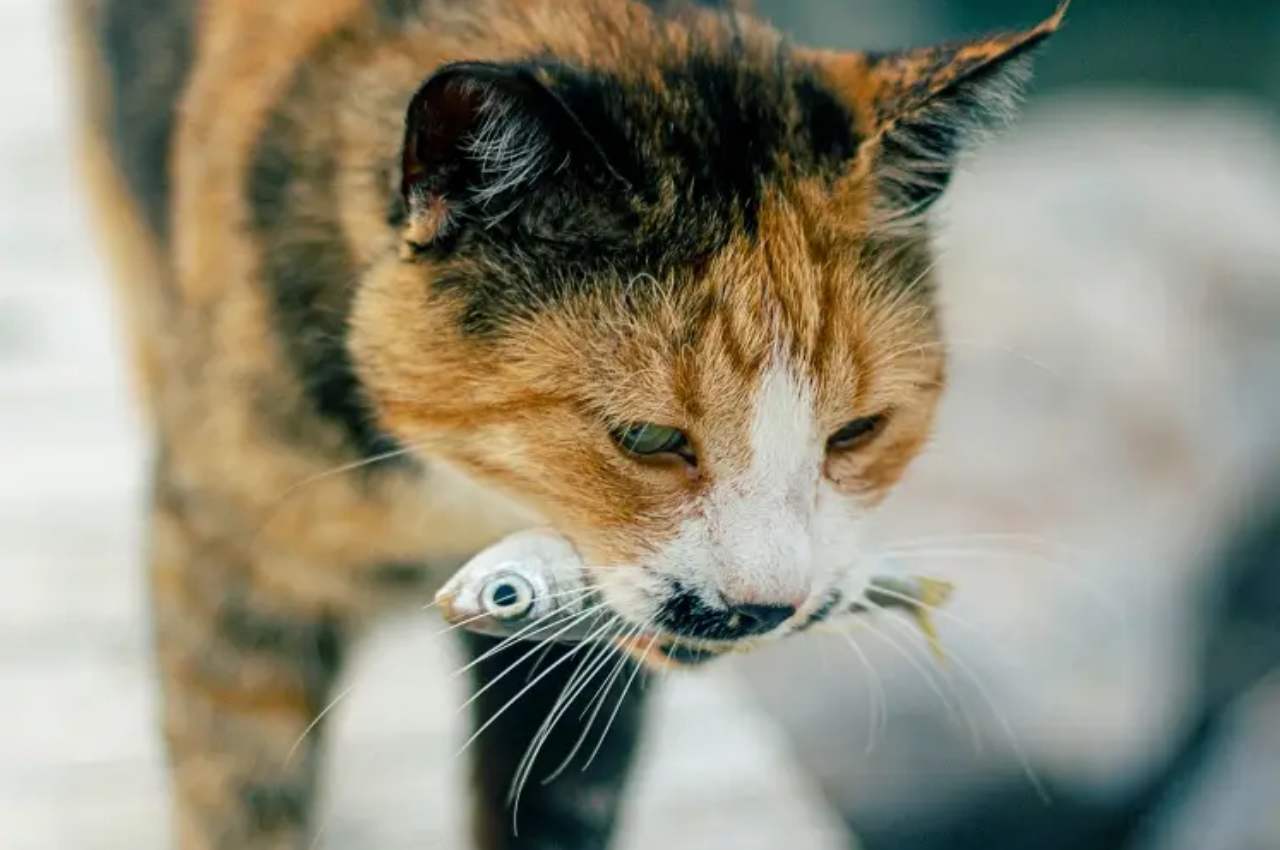Yes, cats can eat salmon skin but in moderation. Salmon skin is safe for cats and provides omega-3 fatty acids beneficial for their health.
However, too much can lead to gastrointestinal upset due to the high-fat content. When feeding salmon skin to your cat, ensure it is cooked and free from any seasoning or flavorings. Always consult with your veterinarian before adding new foods to your cat’s diet to ensure it aligns with their specific nutritional needs.
Salmon skin is a popular delicacy for many humans, and it’s natural to wonder if it’s safe to share this tasty treat with your feline friend. While cats can indeed eat salmon skin, it’s essential to understand the potential benefits and risks associated with including it in their diet. We will cover everything you need to know about whether cats can eat salmon skin. From the potential health benefits to the precautions to keep in mind, you will gain a comprehensive understanding of this topic to make informed decisions regarding your cat’s diet.
Health Benefits of Salmon Skin for Cats
Salmon skin is often a dietary decision that many cat parents contemplate. Curious about introducing this particular component, they weigh the potential health benefits and risks. Considering this, it’s important to explore the nutritional value and health advantages of salmon skin for cats to support informed decision-making.

Nutritional Value
When considering the nutritional value, it’s important to note that salmon skin is rich in omega-3 fatty acids, which contribute to a cat’s overall well-being. This essential nutrient aids in supporting a healthy coat, promoting brain function, and reducing inflammation.
- Omega-3 fatty acids
- Protein
- Vitamins D
- Minerals like selenium and phosphorus
Healthy Fats
Salmon skin contains healthy fats that can be beneficial for a cat’s overall health. These fats contribute to a cat’s energy levels and assist in maintaining a healthy weight. Additionally, they support cardiovascular health and can aid in reducing the risk of certain diseases.
Potential Risks of Feeding Salmon Skin to Cats
Cats are known to have a love for fish, and many pet owners wonder if it’s safe to feed their feline companions salmon skin. While it may seem like a tasty treat, there are potential risks associated with feeding salmon skin to cats that need to be considered. It’s important to be aware of the potential dangers before deciding to include salmon skin in your cat’s diet.
High Mercury Content
Salmon skin contains high levels of mercury, which can be harmful to cats if consumed in large quantities. Mercury poisoning can lead to serious health issues, including neurological problems and kidney damage. It’s crucial to monitor the amount of salmon skin your cat consumes to prevent potential mercury toxicity.
Possible Allergic Reactions
Some cats may have allergic reactions to salmon skin, leading to symptoms such as vomiting, diarrhea, or skin irritation. Allergies can develop over time, so even if your cat has eaten salmon skin without issues in the past, there is still a risk of developing an allergic reaction. It’s essential to observe your cat for any signs of allergic responses after consuming salmon skin.
Cooked vs. Raw Salmon Skin for Cats
Cats are known to enjoy a variety of fish, including salmon. However, when it comes to feeding them salmon skin, pet owners often wonder about the safety and preparation methods. Let’s delve into the differences between cooked and raw salmon skin for cats.
Safety Concerns of Raw Salmon Skin
- Raw salmon skin may contain parasites and harmful bacteria.
- Risk of causing gastrointestinal issues in cats.
- Potential for thiamine deficiency if consumed in large amounts.
Cooking Methods
- Cooking removes potential pathogens in the skin.
- Baking or grilling are safe methods for preparing salmon skin.
- Avoid seasoning with ingredients harmful to cats.
| Cooked Salmon Skin | Raw Salmon Skin |
| A safer option for cats | Higher risk of contamination |
| Easier for cats to digest | Potential health risks |
Overall, cooked salmon skin is the recommended option for cats to enjoy the benefits of this fish without the potential risks associated with raw skin.
How to Safely Introduce Salmon Skin to Cats
Salmon is a delicious and nutritious fish that many pet owners enjoy. But can cats eat salmon skin? The answer is yes, cats can eat salmon skin in moderation. It is rich in Omega-3 fatty acids, which can benefit your feline friend’s coat and overall health. However, it’s crucial to introduce salmon skin to your cat’s diet safely. Here are some key points to keep in mind when giving your cat this tasty treat.
Small Quantities First
When offering salmon skin to your cat for the first time, it’s important to start with small quantities. Begin by giving them a tiny piece, about the size of your fingernail, to see how they react. By starting small, you can gauge your cat’s tolerance and potential allergic reactions. If they tolerate the skin well, you can gradually increase the portion size over time.
Monitoring for Adverse Reactions
While most cats can safely enjoy salmon skin, it’s essential to monitor them for any adverse reactions. Keep an eye out for signs such as gastrointestinal upset, vomiting, diarrhea, or skin irritations. If you notice any of these symptoms, it’s best to discontinue feeding your cat salmon skin and consult with your veterinarian. Every cat is unique, and what works for one may not work for another.
If your cat has a history of food allergies or sensitivities, it’s wise to consult with your vet before introducing salmon skin into their diet. They can provide guidance based on your cat’s specific needs and help you determine if it’s a suitable addition to their meal plan.
Alternatives to Salmon Skin for Cats
Explore safe alternatives to salmon skin for cats, such as cooked or canned salmon without skin, to avoid potential risks. Providing a balanced diet ensures your feline friend receives essential nutrients without compromising their health.

Just like us, cats enjoy indulging in tasty treats from time to time. However, when it comes to feeding our feline friends, it’s important to know what is safe and healthy for them. While salmon skin may be a popular option among cat owners, it’s essential to consider alternatives that provide the same level of enjoyment and nutrition. Here are a few options to consider:
Healthy Treat Options
When it comes to treating your cat, it’s important to prioritize their health and well-being. While salmon skin may seem like a tempting choice, other alternatives can provide the same satisfaction without compromising on nutrition. Consider the following healthy treat options for your furry companion:
1. Freeze-dried Meat Treats: These treats are a great alternative to salmon skin as they offer a high protein content and are easy to store. Look for options made from premium meats such as chicken, turkey, or beef. They are convenient and provide a crunchy texture that cats love.
2. Homemade Treats: If you prefer to have complete control over your cat’s diet, consider making homemade treats. You can prepare delicious options using ingredients like cooked chicken, tuna, or even pureed fruits and vegetables that are safe for cats.
3. Grain-Free Dental Treats: Dental health is crucial for cats, and there are dental treatments available that can promote healthy teeth and gums. Look for grain-free options that contain natural ingredients and help reduce tartar buildup.
Fish-free Alternatives
While fish is a common ingredient in cat food and treats, not all cats can tolerate or enjoy it. If your cat has a sensitivity to fish or you prefer to go fish-free, there are still plenty of alternatives to consider:
1. Chicken Treats: Chicken is a popular option for cat treats. You can find chicken-based treats in various forms such as freeze-dried, jerky, or even pate-style. These treats provide a great source of lean protein without the risk of any fish-related sensitivities.
2. Vegetable-Based Treats: Cats are obligate carnivores, meaning they require meat for their nutritional needs. However, incorporating small amounts of vegetables into their treats can offer variety and additional nutrients. Carrots, peas, and pumpkins are safe options to consider.
3. Alternative Protein Sources: Instead of fish, look for alternative protein sources such as duck, venison, or even rabbit. These options can provide a unique flavor profile and offer essential amino acids without the fishy undertones. Offering a variety of treats to your cat ensures they won’t miss out on the enjoyment while keeping their diet balanced and nutritious.
Remember to introduce new treats gradually to prevent any digestive upsets, and always consult with your veterinarian if you have any concerns about your cat’s diet.
Consulting with A Veterinarian
When it comes to the dietary habits of your feline friend, seeking advice from a veterinarian is crucial, especially when considering feeding them salmon skin. Consulting with a Veterinarian can provide you with professional advice tailored to your cat’s specific needs.
Professional Advice
Before giving your cat any salmon skin, it’s essential to consult with a veterinarian. They can offer guidance on whether it is safe for your cat’s consumption and in what quantities. Veterinarians have the expertise to evaluate your cat’s dietary requirements and provide personalized recommendations.
Specific Dietary Needs of Cats
Cats have unique dietary needs that must be met to ensure their overall health and well-being. Their diets should primarily consist of high-quality protein sources like commercial cat food. While salmon provides essential nutrients, such as omega-3 fatty acids, moderation is key when introducing new foods like salmon skin.
Common Concerns and Myths About Cats Eating Salmon Skin
Cats are known for their love of fish, and salmon is often a favorite among many feline friends. However, concerns about the consumption of salmon skin by cats have led to various myths and questions. Let’s delve into some common concerns and myths about cats eating salmon skin.
Weight Gain
Some may fear that allowing cats to consume salmon skin could contribute to weight gain. This is a valid concern, as the skin of salmon is rich in fat. Cats are prone to obesity and excess fat intake can lead to weight gain. It’s crucial to monitor how much salmon skin is being consumed by your feline and adjust their diet accordingly.
Digestive Issues
There is a common myth that salmon skin may cause digestive problems for cats. However, cats are typically capable of digesting fish and its skin, provided they have access to high-quality food and are not allergic to fish. Introduce salmon skin gradually to observe any adverse reactions in your cat. If no issues arise, moderation is key to avoiding any digestive discomfort.
Conclusion and Final Thoughts
Salmon skin is not recommended for cats to eat as it can be a choking hazard and contains a high amount of fat that may upset their digestion. It’s best to stick to feeding them cooked, boneless salmon in moderation.
Balanced Approach
When it comes to feeding salmon skin to your cat, it’s essential to take a balanced approach. While it can be a source of beneficial omega-3 fatty acids, it’s important to give it in moderation. Too much can lead to dietary imbalances and potential health issues. It’s also crucial to consider the cat’s overall diet and ensure the inclusion of other essential nutrients.
Monitoring Cat’s Health
It’s important to closely monitor your cat’s health when introducing new foods like salmon skin. Keep an eye out for any allergic reactions, digestive issues, or changes in behavior. If you notice any adverse effects, it’s best to discontinue feeding your cat the salmon skin and consult with a veterinarian. Additionally, regular check-ups can help ensure your cat maintains optimal health.

Conclusion
To sum up, while cats can technically eat salmon skin, moderation is key due to potential risks. It’s important to remove any bones and cook the skin thoroughly to avoid complications. Always consult with your vet before introducing new foods to your feline friend’s diet.
Stay informed, stay cautious!
